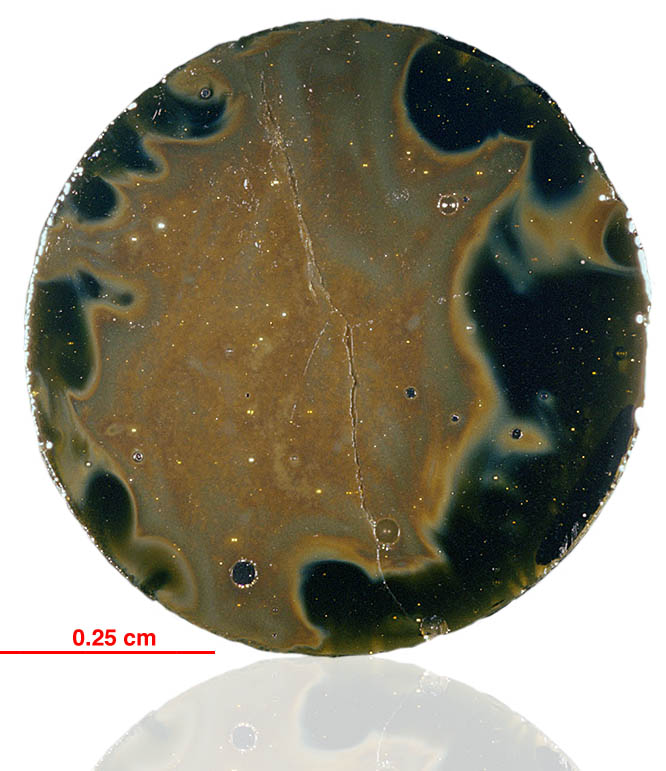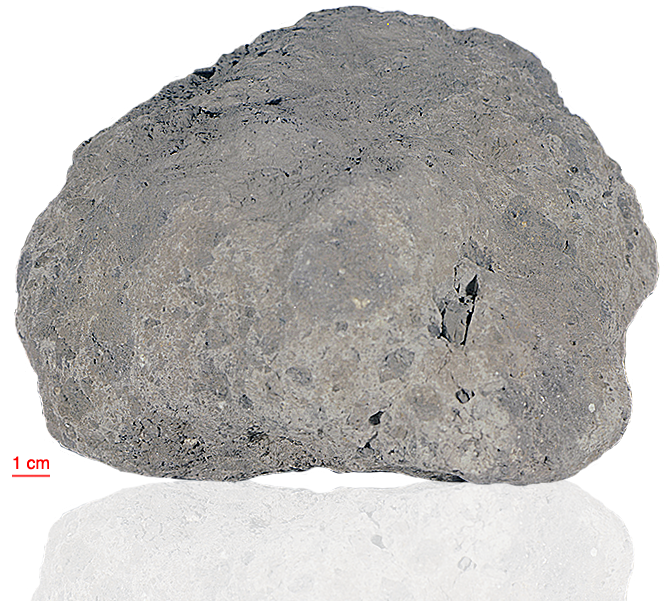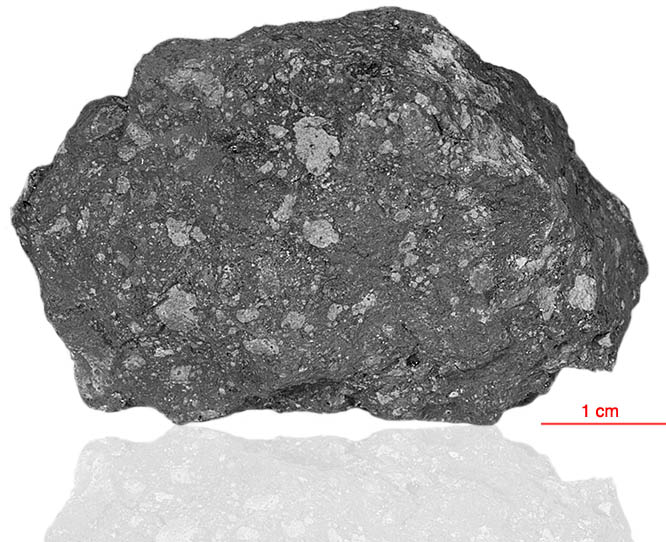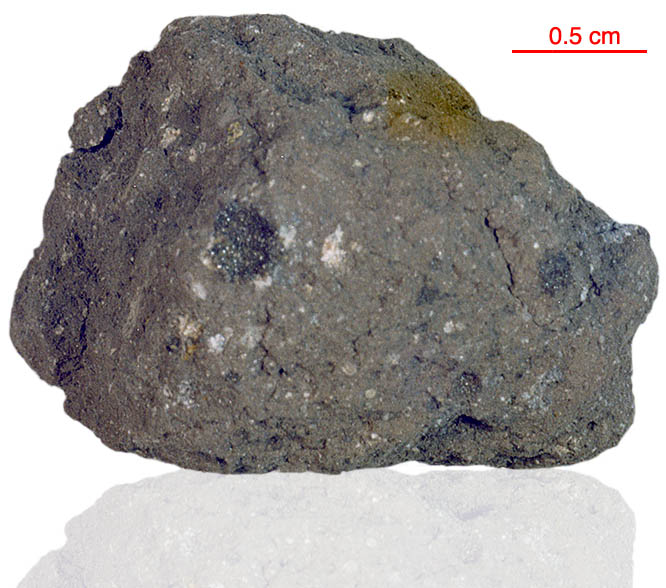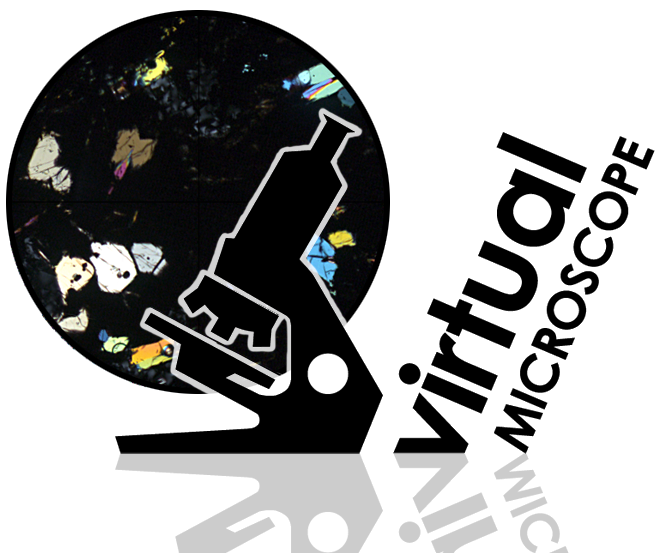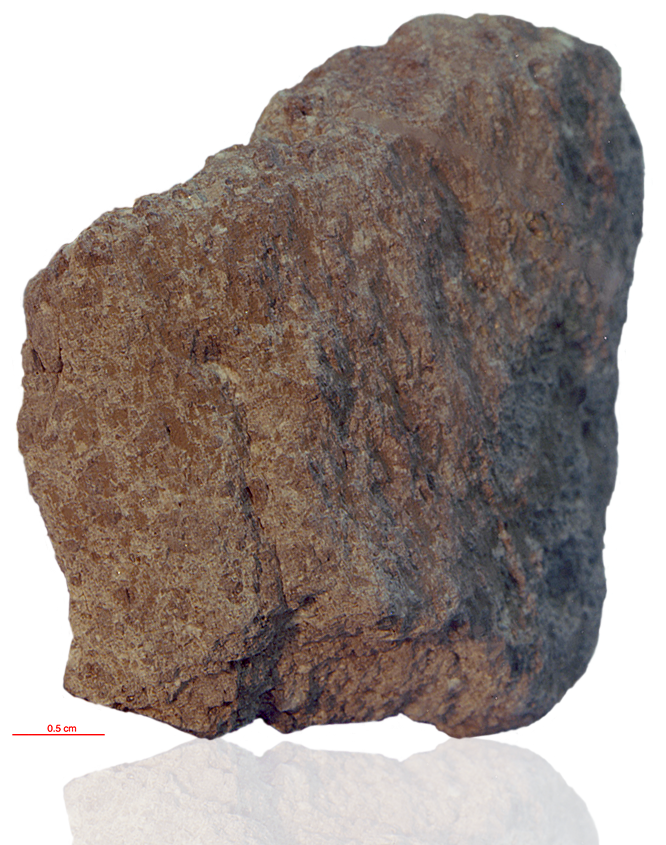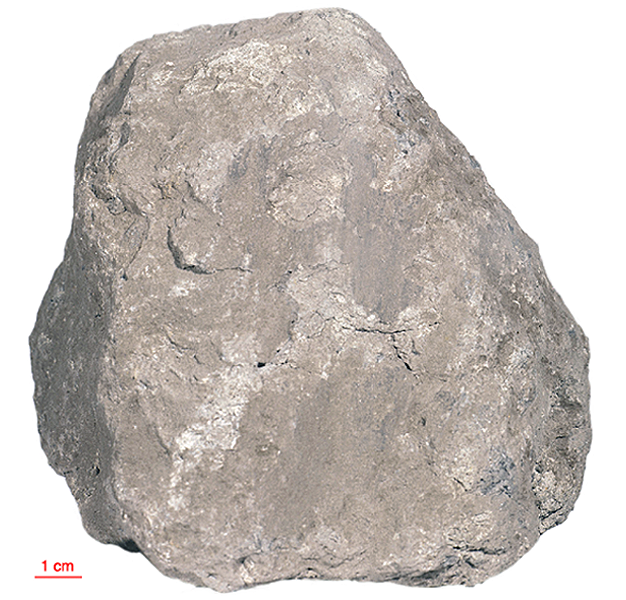
Fact sheet
14301 is a fragmental breccia with about 20% clasts >1 mm, abundant glass, agglutinates and a fine matrix. Most class are lithic fragments, although four types of glass and a small proportion of chondrules are also reported. It is considered to be a regolith or soil breccia. However, in various properties (C content, 4He, Al etc.) it is transitional between the Fra Mauro breccia and typical Apollo 14 regolith breccia.
The sample weighed 1360.6 grams before analysis. It could not be dated accurately but is about 4 billion years old.
The mounting resin of this thin section has deteriorated over time and now contains clusters of feathery crystallites around the margins of the thin section.
Further details of this and other Apollo samples are here: http://curator.jsc.nasa.gov/lunar/
The Apollo 14 landing site was in a region formed by impact-basin debris.
Most of the 42 kilograms of rocks and soil collected on Apollo 14 are breccias (rocks that are composed of fragments of other, older rocks). In some cases, the rock fragments that form a breccia are themselves breccias. Such rocks obviously have experienced complex histories with multiple generations of impact events. Some breccias were heated enough that some of the material in the rock was melted.
Apollo 14 was launched on 31 January 1971.

